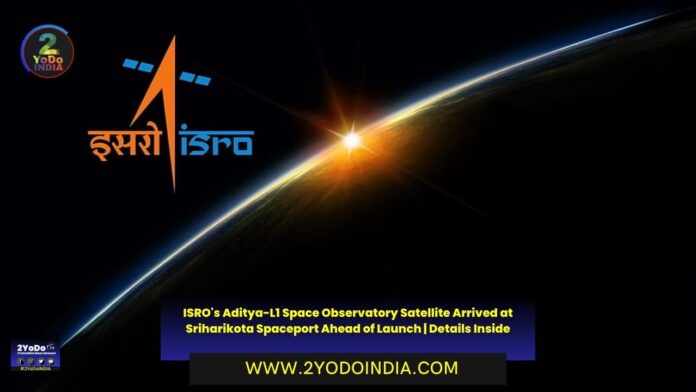Aditya-L1, the first space-based Indian observatory to study the Sun, is getting ready for its launch soon, ISRO said. The satellite realised at U R Rao Satellite Centre here, has arrive at the ISRO’s spaceport in Sriharikota in Andhra Pradesh, the Bengaluru-headquarter national space agency said in an update on the mission.
ISRO official told PTI when ask about the date of the launch and the its about September first week.
The spacecraft is expect to be place in a halo orbit around the Lagrange point 1 (L1) of the Sun-Earth system, which is about 1.5 million kilometers from the Earth.
A satellite place in the halo orbit around the L1 point has the major advantage of continuously viewing the Sun without any occultation/eclipses, ISRO noted.
ISRO said :
"This will provide a greater advantage of observing the solar activities and its effect on space weather in real-time,".
The spacecraft carries 7 payloads to observe the photosphere, chromosphere, and the outermost layers of the Sun (the corona) using electromagnetic and particle and magnetic field detectors.
Using the special vantage point L1, four payloads will directly view the Sun and the remaining three payloads would carry out in-situ studies of particles and fields at the L1, thus providing important scientific studies of the propagatory effect of solar dynamics in the interplanetary medium.
ISRO said :
"The suits of Aditya L1 payloads are expected to provide the most crucial information to understand the problem of coronal heating, coronal mass ejection, pre-flare, and flare activities and their characteristics, dynamics of space weather, propagation of particle and fields and other".
The major science objectives of the Aditya-L1 mission are: the study of solar upper atmospheric (chromosphere and corona) dynamics, study of chromospheric and coronal heating, physics of the partially ionised plasma, initiation of the coronal mass ejections, and flares, observe the in-situ particle and plasma environment providing data for the study of particle dynamics from the Sun, physics of solar corona and its heating mechanism, diagnostics of the coronal and coronal loops plasma: temperature, velocity and density, development, dynamics, and origin of coronal mass ejections, identify the sequence of processes that occur at multiple layers (chromosphere, base and extend corona) which eventually leads to solar eruptive events, magnetic field topology and magnetic field measurements in the solar corona, drivers for space weather (origin, composition and dynamics of solar wind).
The instruments of Aditya-L1 are tune to observe the solar atmosphere, mainly the chromosphere and corona, while the in-situ instruments will observe the local environment at L1.





